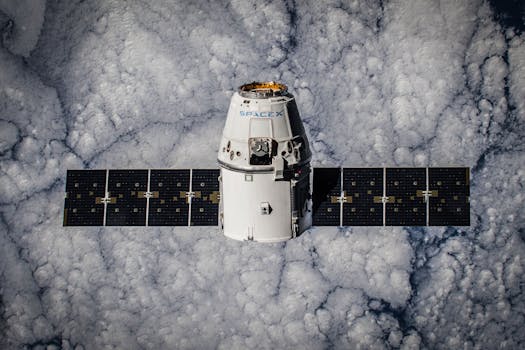Beyond the Atmosphere: The Future of Satellite Technology for Surveillance and Connectivity – Satellite

Beyond the Atmosphere: The Future of Satellite Technology for Surveillance and Connectivity – Satellite
The future of satellite technology is rapidly evolving, with advancements in surveillance and connectivity capabilities. Satellite technology has come a long way since the launch of the first artificial satellite, Sputnik, in 1957. Today, satellites play a crucial role in a wide range of applications, from navigation and communication to weather forecasting and Earth observation. In this article, we will explore the latest developments and innovations in satellite technology, and what they mean for the future of space exploration and communication.
Satellite technology has revolutionized the way we communicate and navigate. With the launch of the first commercial communications satellite, Intelsat 1, in 1965, satellites have enabled global communication, facilitating international telephone calls, television broadcasts, and internet connectivity. Today, there are over 5,000 satellites in orbit around the Earth, providing a range of services, including navigation, weather forecasting, and Earth observation.
Advances in Surveillance Technology
One of the most significant advancements in satellite technology is in the field of surveillance. Satellites are now capable of providing high-resolution images of the Earth’s surface, allowing for detailed monitoring of the environment, tracking of natural disasters, and detection of human activities. The use of satellite imagery has become increasingly important in a range of applications, from military operations to environmental monitoring and disaster response.
The development of synthetic aperture radar (SAR) technology has enabled satellites to penetrate cloud cover and darkness, providing high-resolution images of the Earth’s surface regardless of weather conditions. This technology has been used in a range of applications, including environmental monitoring, agricultural management, and disaster response.
Connectivity and Communication
Satellite technology has also revolutionized the way we communicate. With the launch of the first mobile satellite communications system, Inmarsat, in 1979, satellites have enabled global communication, facilitating international telephone calls, email, and internet connectivity. Today, there are a range of satellite communications systems in operation, providing connectivity to remote and underserved communities around the world.
The development of low-Earth orbit (LEO) satellites has enabled the provision of high-speed internet connectivity to remote and underserved communities. Companies such as SpaceX and OneWeb are launching constellations of LEO satellites, which will provide global coverage and high-speed connectivity to even the most remote areas of the world.
Conclusion
In conclusion, the future of satellite technology is rapidly evolving, with advancements in surveillance and connectivity capabilities. Satellites are playing an increasingly important role in a wide range of applications, from navigation and communication to weather forecasting and Earth observation. As technology continues to advance, we can expect to see even more innovative applications of satellite technology, from environmental monitoring to disaster response and beyond.


